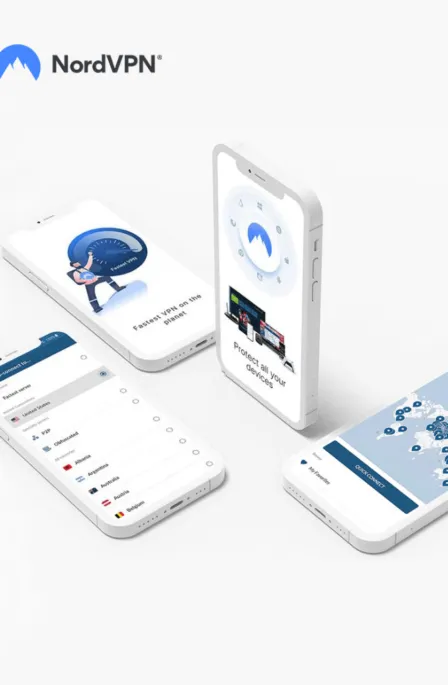Do you know how cybersecurity threats are torturing your health? Yes, they are a threat to your health as well. You might be surprised that cybercrime has also increased in healthcare organizations. Like any other organization, healthcare organizations are also facing threats of cyberbullying.
Have you ever been to the record room of a hospital? Or have you ever seen the record room of a hospital? If you are a staff member or a doctor, you may have, but have a patient or any other visitor to the hospital ever seen the record room? I think the answer is no.
You are not allowed in the record rooms of a hospital because the information kept there is pretty confidential. This is the patient’s personal info, so it could not be leaked. So anyone not part of the staff is not allowed access to these records except those who need it for the patient’s treatment.
These records may harm the patient in many ways if they get into the hands of any wrong person. And cybercrime is increasing these days in healthcare organizations that are penetrating and violating these records. Hackers might try to get into the records and use them for their benefit. It is a big concern as the patients’ lives are at risk in this case.
Some cybersecurity threats in healthcare organizations
Many hackers are roaming around in search of organizations that may have mishaps in their systems to penetrate them and find the information that may help them. Some of the threats of cybersecurity that may harm the healthcare organization are given as under:
- Threat entry points
- Ransomware attacks
- Cryptojacking attacks
- IoT healthcare attacks
- Healthcare supply chain attacks
1. Threat entry point
The attacks the hackers appoint to attack the patient’s data are the threat entry point. These are the vulnerabilities in which the hacker injects malware into the systems of the computers and other devices used in a hospital.
This kind of issue arises due to the mistake of an insider. That means when a staff member makes a mistake, then this kind of error may show up. The whole system is affected when any insider clicks on an unknown file that may be injected with malware. This way, the information and data regarding any patient may reach the hacker, who might use it against that patient for any reason.
2. Ransomware attacks
These kinds of attacks most generally happen for the reason of ransom money. The hacker does this to get money from the user by using his/her records against him/her. This also includes the injection of malware into the system of any healthcare organization.
Then the malware may lock any one computer in the organization or even more than one. It can even lock the whole system up. In exchange for the data, the hacker might ask the hospitals or government (If it is a famous hospital or is run by the government) to pay some. This is very risky as no one knows that even after giving the money, the hacker would return the full data and not keep any copies or might not try to hack again.
3. Cryptojacking attacks
This is one of the deadliest kinds of attacks on healthcare organizations. In the previous year, 2018, this exceeded the list of threats to number one, beating ransomware as well. This involves the mining of data, which means that mining software can be installed on medical devices.
This malware and mining software is very harmful because the more time the system remains open and the device is unlocked, the more cybercriminals inject mine into the system. So the working staff may not know that the device is on and may have turned it on like that for some time, and in that meantime, the mines may be injected into the systems to the fullest.
4. IoT healthcare attacks
Another severely dangerous attack is the IoT healthcare attack. This happens because of errors in IoT. In these attacks, a hacker can trick anyone into sharing medical devices. Hence they can use these shared medical devices against the healthcare organizations or the patient for their own benefit and profit.
The reason for such an attack is that the system may not have been updated for long. That means that when a system is not upgraded for a long time, it can be easy to trick anyone into it and share the information and data.
5. Healthcare supply chain attacks
These kinds of attacks happen when cybercriminals capture a delivery from a provider and inject malicious encryption directly into the medical devices. Any company or source through which medical devices are brought can be fooled into sharing the device they supply to the hospitals.
What happens is that hacker tries to look for back doors in the systems of any source (which may include business partners, suppliers). This way, they can easily interlope and inject malware into the system without anyone knowing who did it.
How can healthcare organizations solve cybersecurity threats?
All the problems and attacks mentioned above can be quickly resolved if specific precautionary and preventive measures are taken. We can fight the attacks and defend healthcare organizations from trapping by the tricks of hackers in the following ways:
1. By Education
We must keep the staff in healthcare organizations educated. This means that we should only hire the available and competent staff to work in a healthcare organization and that they are educated in the given field. The government should keep a proper education system. Also, a complete test should be taken before appointing anyone to the association.
2. Providing training
After the education of staff, it is also crucial that the staff is trained. This is different from being educated, as in education, they only learn what they should or should not do. But, while training, they will understand every process practically. They will gain experience before starting work, and this would minimize the chances of mistakes.
3. Updating machines
Another essential method to protect the organization’s data breaches is by continually updating the machinery used in medical. Medical devices may be ancient and need to be renewed or upgraded. Doing so can create barriers and walls between the hackers and the patients’ data. Thus keeping it safe.
4. Using cloud data backups
An effortless way to protect your data is by using cloud data backups. It is very easy as it duplicates the information over the Internet to the service’s servers, proposes the safety of off-site storage for the most necessary files, and a simple, one-time setup programming. Hence it can provide security more than any other method.
5. By informing the medical IT team immediately
Another significant way of ignoring such kinds of attacks is that the medical IT team should always be alert. As soon as any medical device gets attacked by malware, especially in ransomware attacks, you should inform the IT team directly. That is because, in such cases, you do not know that the attacker might leave the data after ransom payment. So, it is better to inform the IT team.
6. By reminding staff of training regularly
It is not necessary that once trained, the staff will always remember the full training. They might forget some critical parts of it, especially the ones regarding security. So it is also essential to keep reminding them of the rules and practices they must follow while doing their jobs. This way, they would not make mistakes at all.
7. Limiting data access
It is an important step that not everyone working in the hospital has access to the data. For example, the doctors coming from outside, i.e., the external doctors, should only be provided with the case history of the patient they are treating and not all the patients. Similarly, not every nurse or ward boy should have access to this data.
8. Having a crisis management plan from before
A way to stop this attack from happening in the first place is by being prepared only for such kinds of attacks. We can do so by always having a crisis management plan ready. With a crisis management plan, we can set plans for crisis situations, such as hacking and attacks on the data of medical devices. This way, the patient’s data will be saved in the first place only.
9. Using a secure internet network
Last but not least, it is vital that we have a reliable internet network. It should be trustworthy in keeping all the information so strong that no one can penetrate it easily. This way also, you can stop the hackers from attacking in the first place only. So they would never have any access to the data provided by the patients. Hence, the info remains confidential.
Conclusion
Our medical system is essential to save people’s lives, and if it is not safe from attackers, we must immediately take steps to stop these attacks. Hence, the above are the given ways to prevent these hacking attacks in the healthcare sector, and if we follow them, we can keep the safety of data breaching.
Share this article
About the Author
Rebecca James is an IT consultant with forward thinking approach toward developing IT infrastructures of SMEs. She writes to engage with individuals and raise awareness of digital security, privacy, and better IT infrastructure.
More from Rebecca JamesRelated Posts

How to Avoid Restrictions When Gambling Online
The figures of people who like online gambling are continuously increasing. Over 155.3 million peopl...

20 Best Penetration Testing Tools For Security Professionals
KEY TAKEAWAYS If you’re in a hurry, then have a look at the list of 20 best penetration testin...

The Role of Developer Security as a Standard in the Software Development Process
Also known as developer-first security, developer security refers to building software while shiftin...

How To Detect Hidden Cameras And Listening Devices? A Complete Guide
Many people feel like someone is watching them or listening to their conversations. They may be righ...

What Is Virtual Firewall And How It Help Us?
Our cybersecurity team is continuously working for the welfare of people by finding out and preventi...

7 Tips to Conquer Ransomware Attacks
Ransomware attacks are growing frequently and affecting every sector of the business industry. These...





